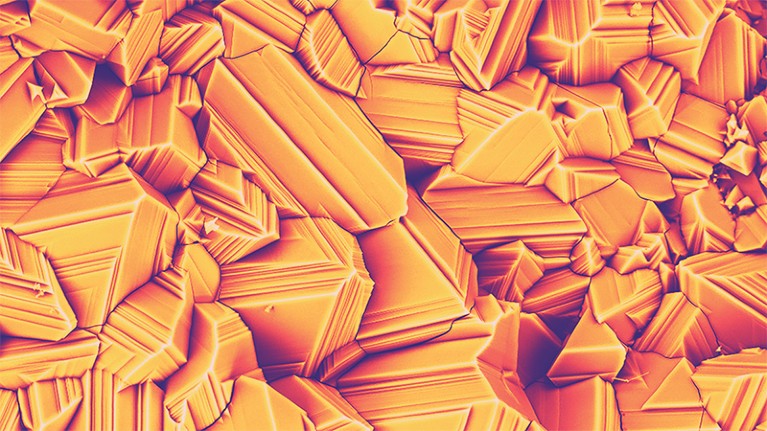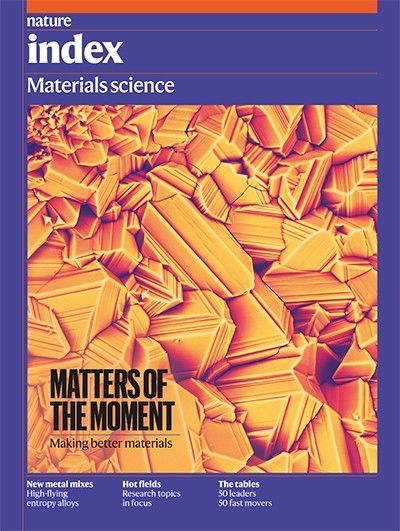
Nickel oxide formed on a single-crystal nickel-based superalloy.Credit: Radosław Swadźba, Łukasiewicz/Institute for Ferrous Metallurgy, Poland
Hope is not a strategy, as the aphorism for our times goes, but it can be a powerful motivator when searching for solutions to intractable problems. Many of the 79,000 papers in the Nature Index database that prompted this supplement offer it: in the idea, now reality, that new molecules with desired characteristics such as low toxicity can be designed at speed to replace harmful molecules used in existing products, and in immunologically active nanomaterials that can ‘re-educate’ the immune system to tackle cancer and other diseases, for example.
Nature Index 2021 Materials science
Our tables, based on papers published from 2015 to 2020 in the 82 natural-sciences journals tracked by the Nature Index, suggest a strong focus in some institutions and countries. For 5 of the leading 50 institutions in the field, materials-science-related research comprises more than half their output in the Nature Index, as measured by our key metric, Share. Three are in China, one is in South Korea, and the other is in Japan.
There’s evidence, too, of growing competition in the field. In Nature Index 2019 Materials Science, 19 of the 20 institutions with the greatest increase in materials-science Share for the period 2015–18 were from China. For the period 2019–20, only 6 of them were Chinese, and 9 other countries also made the list. China, Japan, South Korea and Singapore all performed better in materials science between 2015 and 2020 than they did overall (across all subject areas) in our 2021 Annual Tables, especially South Korea (5th in the field, 8th across all subject areas) and Singapore (9th in the field, 17th overall).
We remind readers that the Nature Index provides only one indicator of research performance, and many other factors need to be taken into account when assessing the quality of research or institutions.

 High-performing places in the materials world
High-performing places in the materials world
 High-entropy alloys expand their range
High-entropy alloys expand their range
 Birds of paradise reveal a dark secret
Birds of paradise reveal a dark secret
 How nanotechnology can flick the immunity switch
How nanotechnology can flick the immunity switch
 Makers and shakers
Makers and shakers
 Ferroelectric materials prompt a rethink of matter
Ferroelectric materials prompt a rethink of matter
 Machines learn to unearth new materials
Machines learn to unearth new materials







